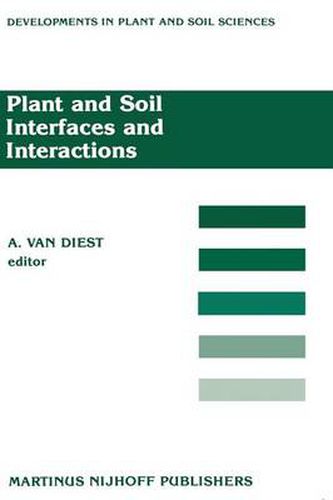Readings Newsletter
Become a Readings Member to make your shopping experience even easier.
Sign in or sign up for free!
You’re not far away from qualifying for FREE standard shipping within Australia
You’ve qualified for FREE standard shipping within Australia
The cart is loading…






This title is printed to order. This book may have been self-published. If so, we cannot guarantee the quality of the content. In the main most books will have gone through the editing process however some may not. We therefore suggest that you be aware of this before ordering this book. If in doubt check either the author or publisher’s details as we are unable to accept any returns unless they are faulty. Please contact us if you have any questions.
Forty years ago, when PLANT AND SOIL first appeared, Europe was still recovering from the devastating effects of World War II. During the war years, work in many centres of agricultural research had come to a virtual standstill. Buildings and equipment were destroyed, scientists were often forced to terminate their research and teaching activities and funds allocated to such work were diverted to other, at that time, more pressing needs. During the first post-war years reconstruction was undertaken with great zeal and in that light the founding of the new journal PLANT AND SOIL must be viewed. In the pre-war period most agricultural science journals were still primarily national ones and consequently many articles were published in languages mastered by only a limited number of potential readers. In small countries whose languages are not widely understood, the desire arose to publish research findings in one of the major languages. It is therefore understandable that in the early years of the journal’s existence, large portions of PLANT AND SOIL were filled with articles from the Scandinavian countries and The Nether lands. Originally, rather frequent use was made of the opportunity to publish also in German and French, but with the advance of English as a major language of communication, a decline was noticeable in the number of German and French manuscripts submitted. As a consequence the Edi torial Board has recently decided to terminate the publishing of articles in these languages.
$9.00 standard shipping within Australia
FREE standard shipping within Australia for orders over $100.00
Express & International shipping calculated at checkout
Stock availability can be subject to change without notice. We recommend calling the shop or contacting our online team to check availability of low stock items. Please see our Shopping Online page for more details.
This title is printed to order. This book may have been self-published. If so, we cannot guarantee the quality of the content. In the main most books will have gone through the editing process however some may not. We therefore suggest that you be aware of this before ordering this book. If in doubt check either the author or publisher’s details as we are unable to accept any returns unless they are faulty. Please contact us if you have any questions.
Forty years ago, when PLANT AND SOIL first appeared, Europe was still recovering from the devastating effects of World War II. During the war years, work in many centres of agricultural research had come to a virtual standstill. Buildings and equipment were destroyed, scientists were often forced to terminate their research and teaching activities and funds allocated to such work were diverted to other, at that time, more pressing needs. During the first post-war years reconstruction was undertaken with great zeal and in that light the founding of the new journal PLANT AND SOIL must be viewed. In the pre-war period most agricultural science journals were still primarily national ones and consequently many articles were published in languages mastered by only a limited number of potential readers. In small countries whose languages are not widely understood, the desire arose to publish research findings in one of the major languages. It is therefore understandable that in the early years of the journal’s existence, large portions of PLANT AND SOIL were filled with articles from the Scandinavian countries and The Nether lands. Originally, rather frequent use was made of the opportunity to publish also in German and French, but with the advance of English as a major language of communication, a decline was noticeable in the number of German and French manuscripts submitted. As a consequence the Edi torial Board has recently decided to terminate the publishing of articles in these languages.